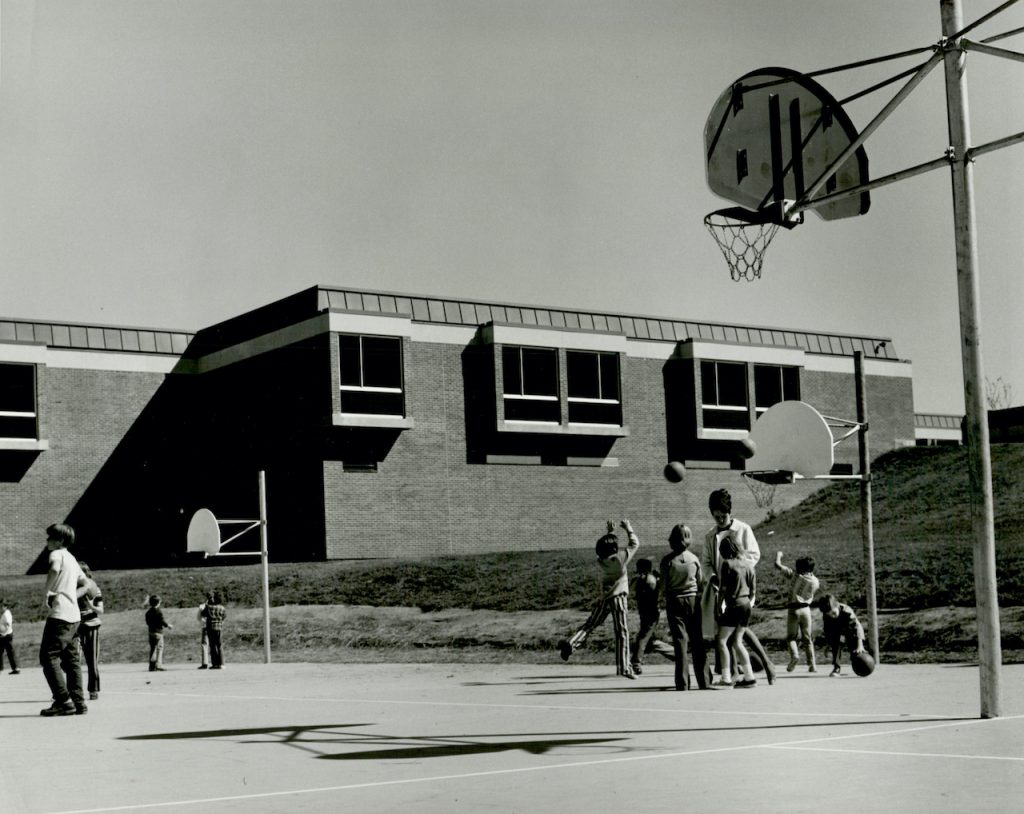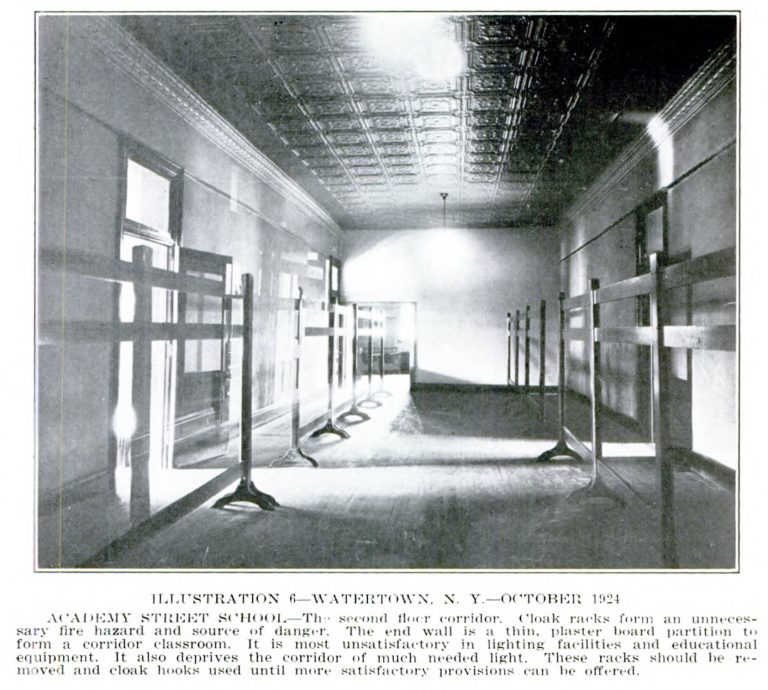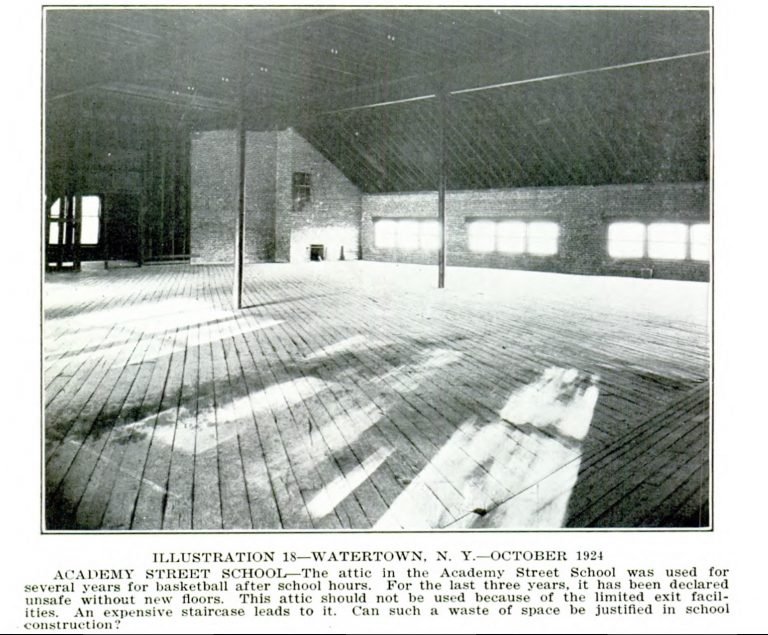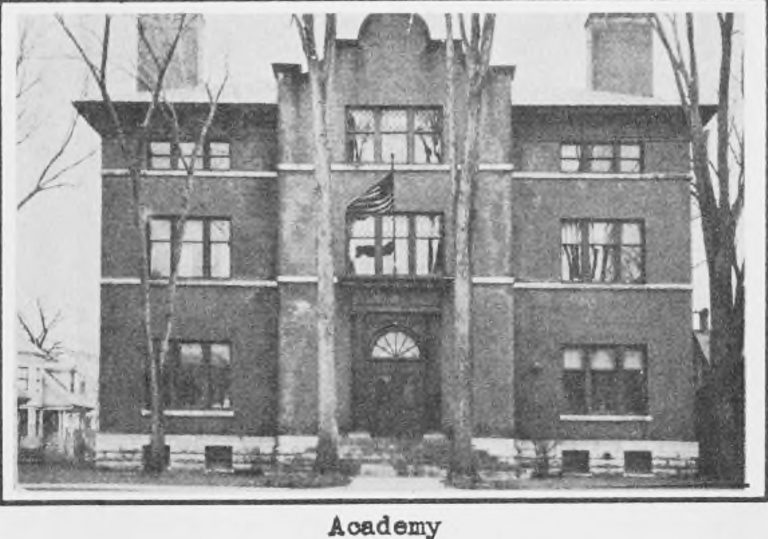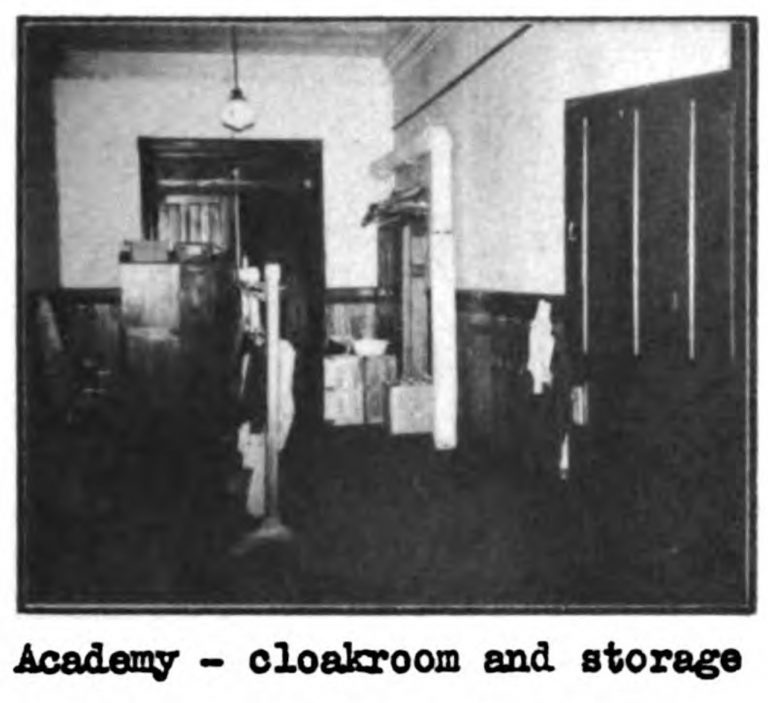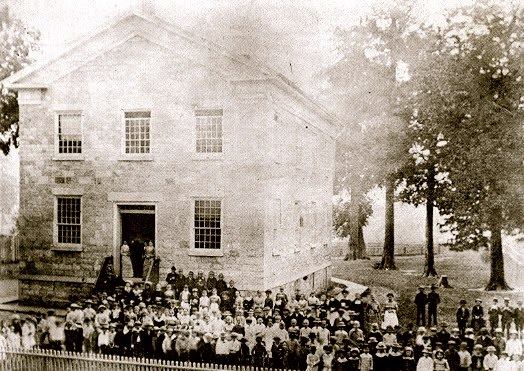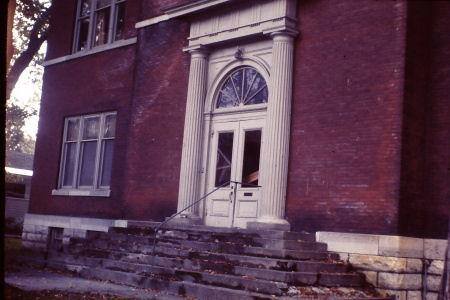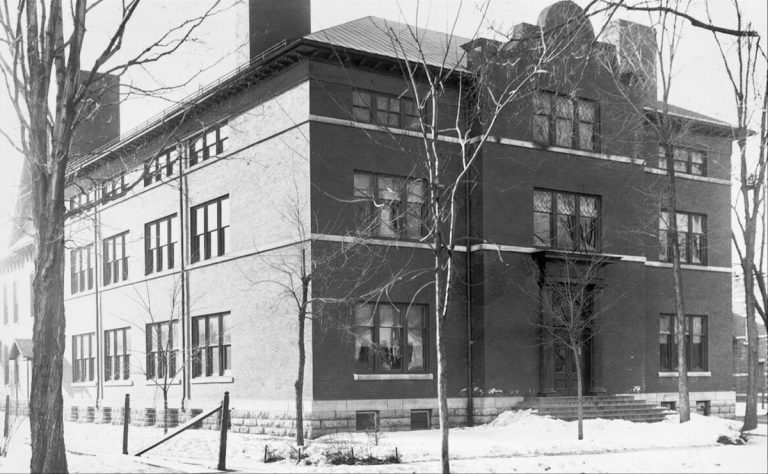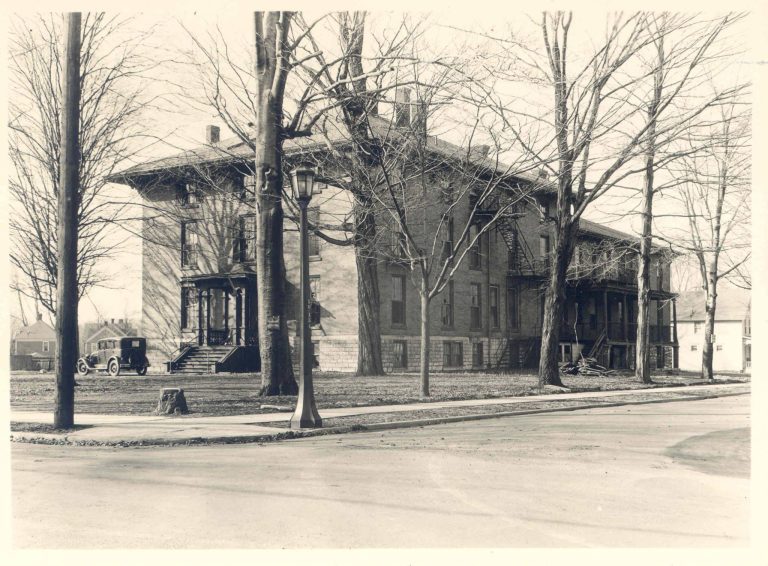The Academy Street Schools: Same Old Story As City’s Other Public Schools
The original Academy Street School, built in 1832, was built of stone to provide higher education to young men eight years after Watertown established its eponymous Female Academy.
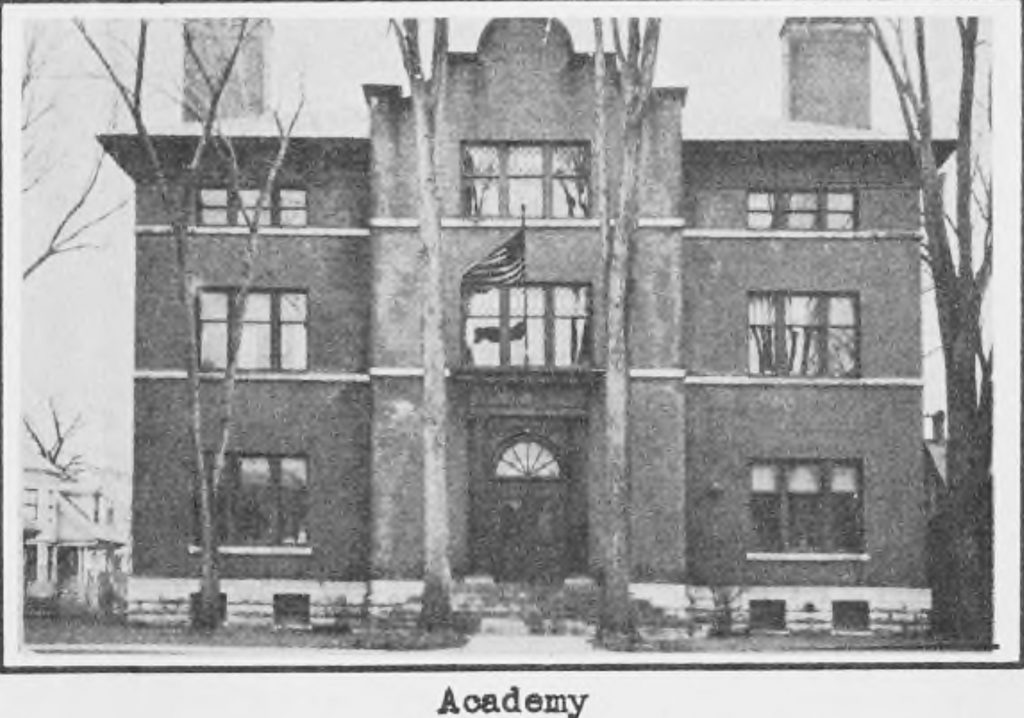
The Watertown Daily Times would give an assessment of the school from a recent visit in their January 18, 1872 edition stating–
It is needless to explain where the Academy Street School is situated. We do not believe there is a person in town who does not know, such an “old established” building it is. In fact, we believe that in showing to strangers the sights in and around our beautiful city the guides are always particular to assure the sight seer that this old school building was not used for a fort in the revolutionary war, an arsenal in the war of 1812, or is not now occupied as a jail.
As cheerless as this pile of stone may look from without, there are pleasant things awaiting those who step inside the uninviting structure. Thus we found it, and thus we believe all will find it who are fortunate enough to visit there.
As we before observed, this building is constructed of stone, and is two stories high with a basement, and we quote the forthcoming report of the Board of Education, the following additional description: “It is being now thoroughly repaired; ventilation will be good; heating apparatus is good. It is supplied with city water. The lot is 132 feet front on Academy Street, and 287 feet deep. The shade trees are large but not ornamental. The front fence is good, but the back fence is in poor condition.”
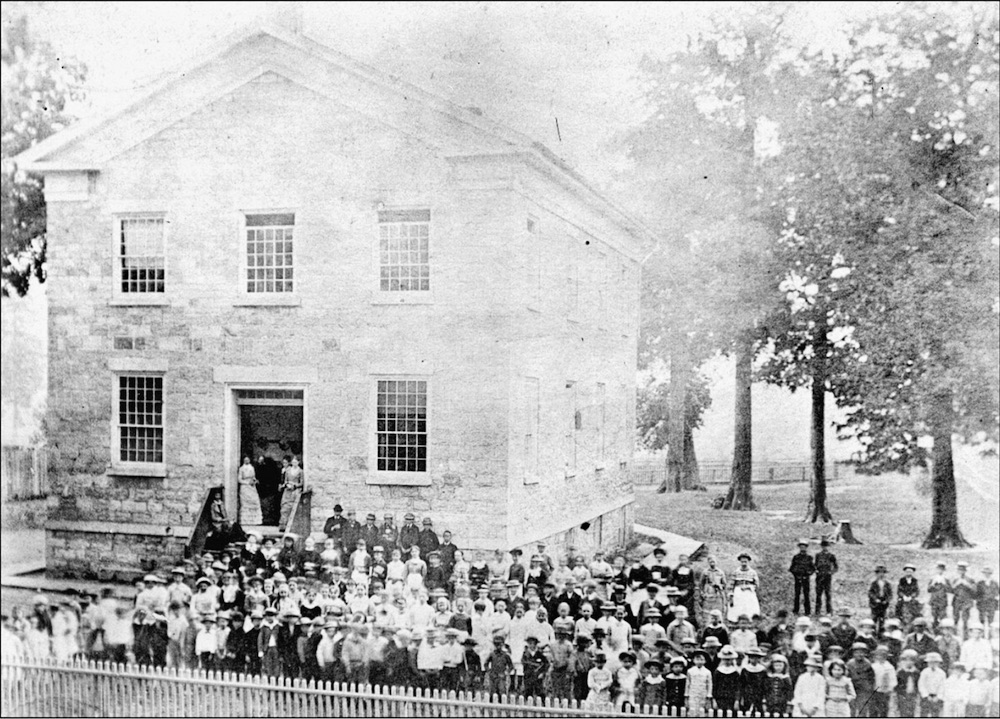
Much like all the other city schools, Mead, Cooper, Mullin, Arsenal, State Street High School and others, the era between 1875-1905 resulted in tremendous growth with the need for new schools to quell the overcrowding conditions.
In 1885, the new Academy Street School would be the subject of an article in the December 15th edition of the Watertown Daily Times–
The Academy Street School-house, accepted by the board of eduction last night, is a handsome building, built in the rear of the old school-house and in the center of the lot. It is built of brick, three stories high, and will accommodate when finished about two hundred pupils.
As you enter the building you are ushered into a hallway, and on each side of it are stairs leading to the second story. On the first floor the large room in front is to be used as a study room, and back of it, are four recitation rooms.
The first floor is to be used by the lower grades. The second floor is divided the same as the first, and will be occupied by the higher grades. The whole building will be heated by steam, well lighted and ventilated. The top story will not be used for anything in particular.
The building has a very handsome tower, in which will be located the school bell. The outside of the building has been very prettily painted, and the school-house when finished will be the handsomest in the city.
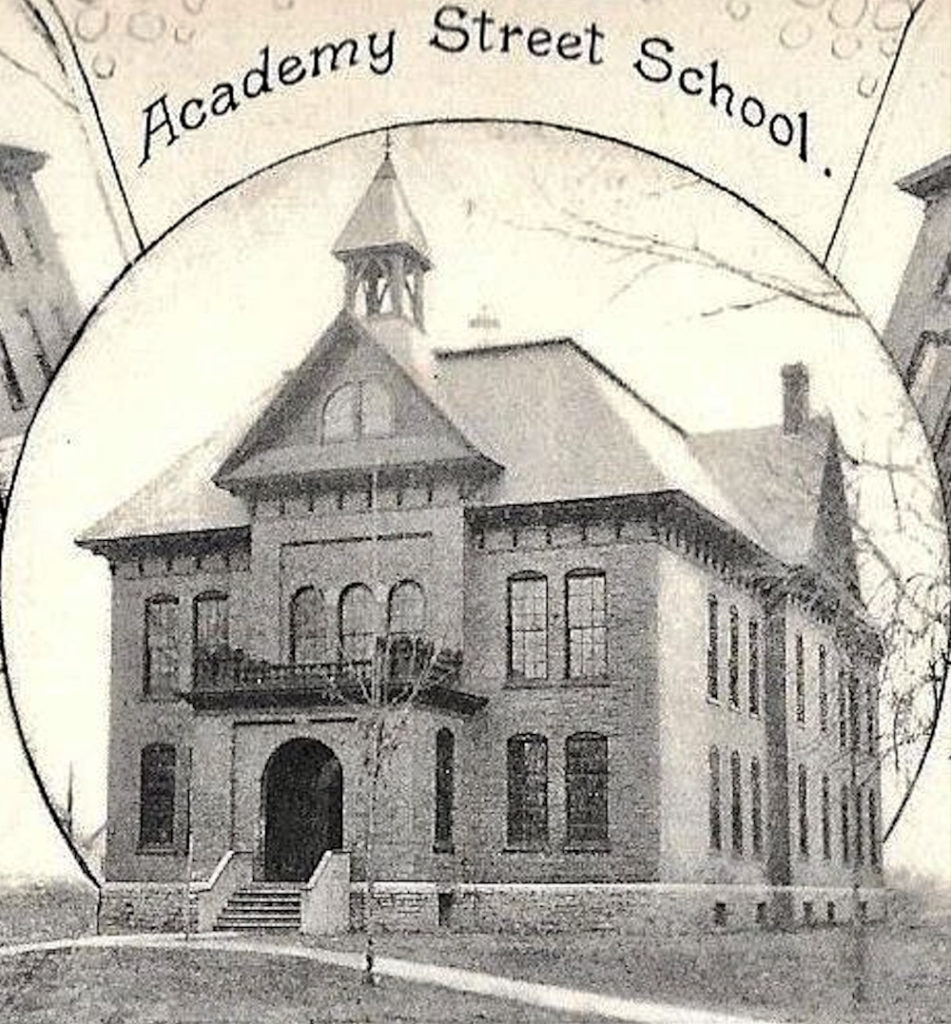
In December of 1905, enrollment at Academy Street School had swelled to 480+ students, leading the Board of Education to request $65,000 from the city council for the construction of a new school to replace Lamon Street School, which would lead to the new State Street School‘s construction, and $50,000 of which would go to the improvement, and enlargement, of Academy Street School which was called “inadequate for the purposes of a school” a mere twenty years after construction.
In early 1906, the issues regarding the school were well documented in an article from the Watertown Daily Times which helps to explain the building’s transformation–
The Academy street school was erected some 20 years ago on the main study room and class room plan. When the study room was abolished in the public schools in favor of class rooms, the big halls in front of the building were divided into four rooms, two on each side, with a central hall extending from the back part through the building. Had these halls gone clear through, better ventilation could be secured. By this arrangement six class rooms were secured on a floor. The building, thus equipped, could have cared for 375 pupils, but the enrollment for January was 493, while the roll books for today showed 501 pupils listed.

The crowded condition, however, does not end the trouble at the Academy Street School. The sanitary conditions are of the worst. Modern ventilation systems were in their infancy when the building was erected, and with the possible exception of a very little ventilation by means of chimney, constructed after the pattern of the old fashioned fire places, all the fresh air comes in through the windows, thereby creating a draft, which is bound, on cold days, to freeze the pupils on the outside row.
With an addition and a proper ventilation system, the building is good for some time to come. It is proposed to construct an eight room addition on the front of the building, where the large lot offers an abundance of room. The addition would cut back through the present hall, utilizing the present garret of the front portion of the old building, said garret being 29 feet high, and having a three-story building, with class rooms on the first and second floor, and an assembly room on the third floor. Thus arranged, the building would easily accommodate 600 or 700 students.
In 1922, there was a big kerfuffle regarding the intent to build an assembly in the school’s third floor. Notable city architect, Albert F. Skinner, cautioned against it due to the fire hazards it would present. Commissioner Delos Cosgrove raised the question of affording better lighting than currently available through the windows at present.
Skinner reported that it would be necessary to alter the roof, which begins to shed light on the dramatic overhaul of the structure from its incarnation in 1885 to what it would ultimately look like.

In 1924, the Academy Street School would come under some of the same criticism as the Boon Street School from the study comprised by Columbia University on the city’s school district and buildings. Some of the photos and associated comments are available in the photo gallery.
1947 Ohio State University City School District Study Findings
In the 1947 study of the city district schools, Academy Street would rank as the oldest, followed by Pearl St. two years behind its 60 years. With 14 classrooms at the time, it had two more than the average but the lot space, at .9 acres, was .7 below average.
One of the problems noted was that Academy, Hamilton, and State Street Schools were too close, as were the Lansing and Cooper Street schools.
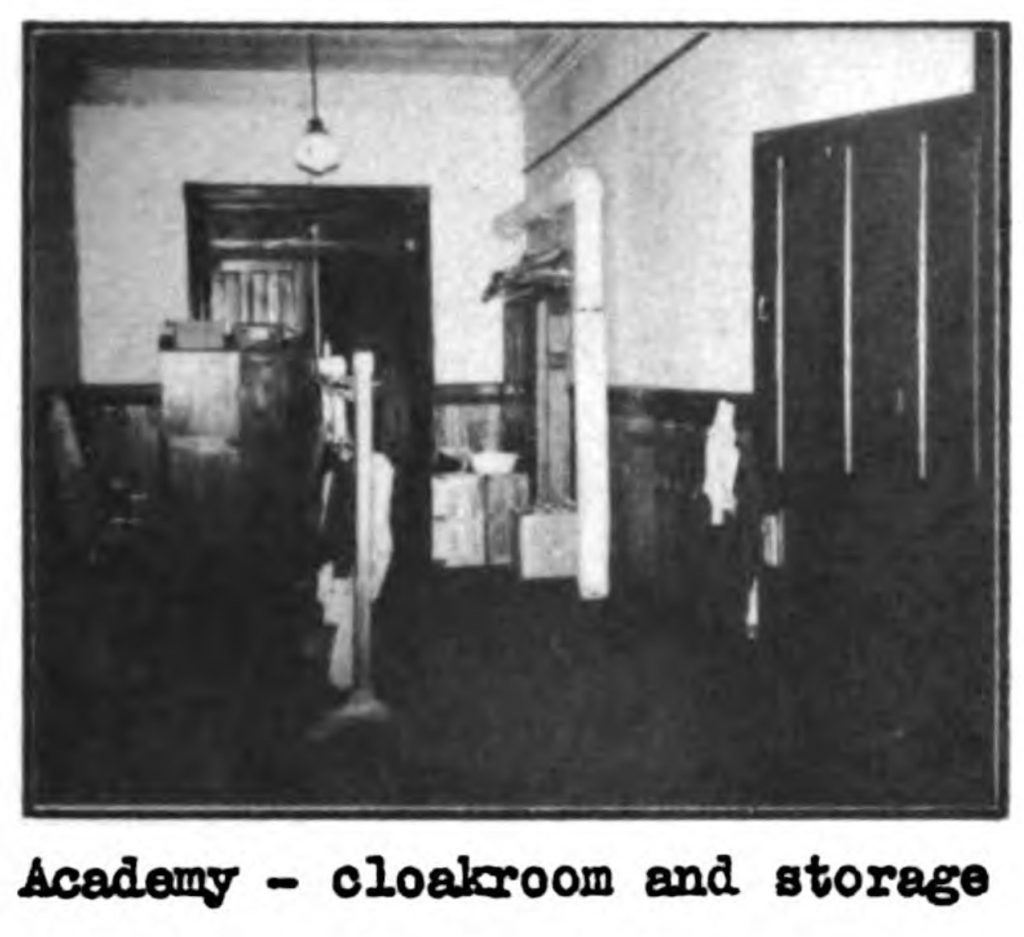
Ultimately, Academy, Hamilton, and Pearl Street Schools would all rank unsatisfactory, meaning they should be abandoned as soon as possible. Academy would rate highest of the three, but with 397 total points, it was still 151 below the average score and was tied lowest of all elementary schools with Pearl Street.
In 1947, its total number of classrooms was listed as 14, but only 11 were being used with a total enrollment of 326 students out of a 420 capacity. The room utilization was thus 79% whereas 78% of the desks were used.
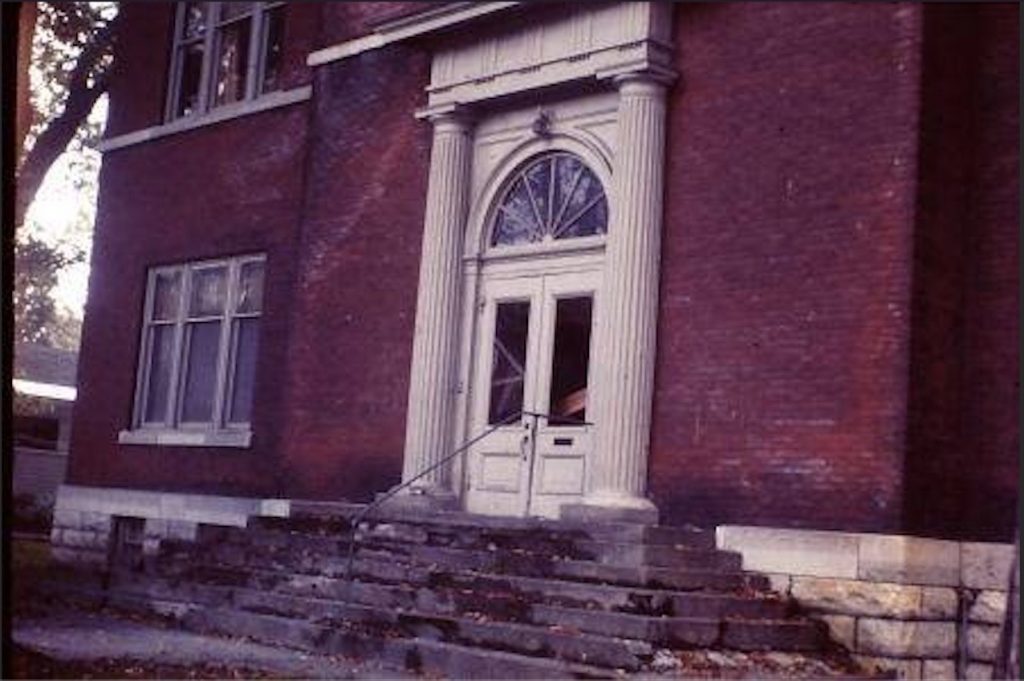
Closure of School and Consolidation To Harold T. Wiley
Like many of the other schools in the city school district, the problems with growth tapered off in conjunction with the city’s own growing pains easing up. By the time that happened, the city was already moving forward with consolidating a number of schools into the $3,000,000 Harold T. Wiley School.
By 1971, the Academy Street School, like Boon, State, and Arsenal Street Schools, would be abandoned by the Board of Education, except for temporary transitional usage, and be sold off/torn down afterward.
Today, the lot of the old Academy Street Schools is a playground just off the corner of Academy and Clay Streets on the southern side.
Interested to learn more about the old school of Watertown, N.Y.? Click here.
